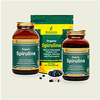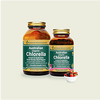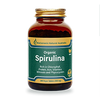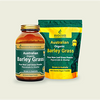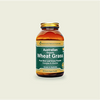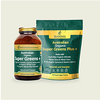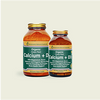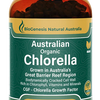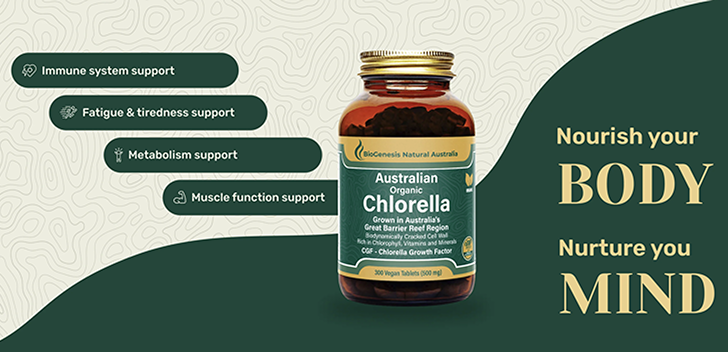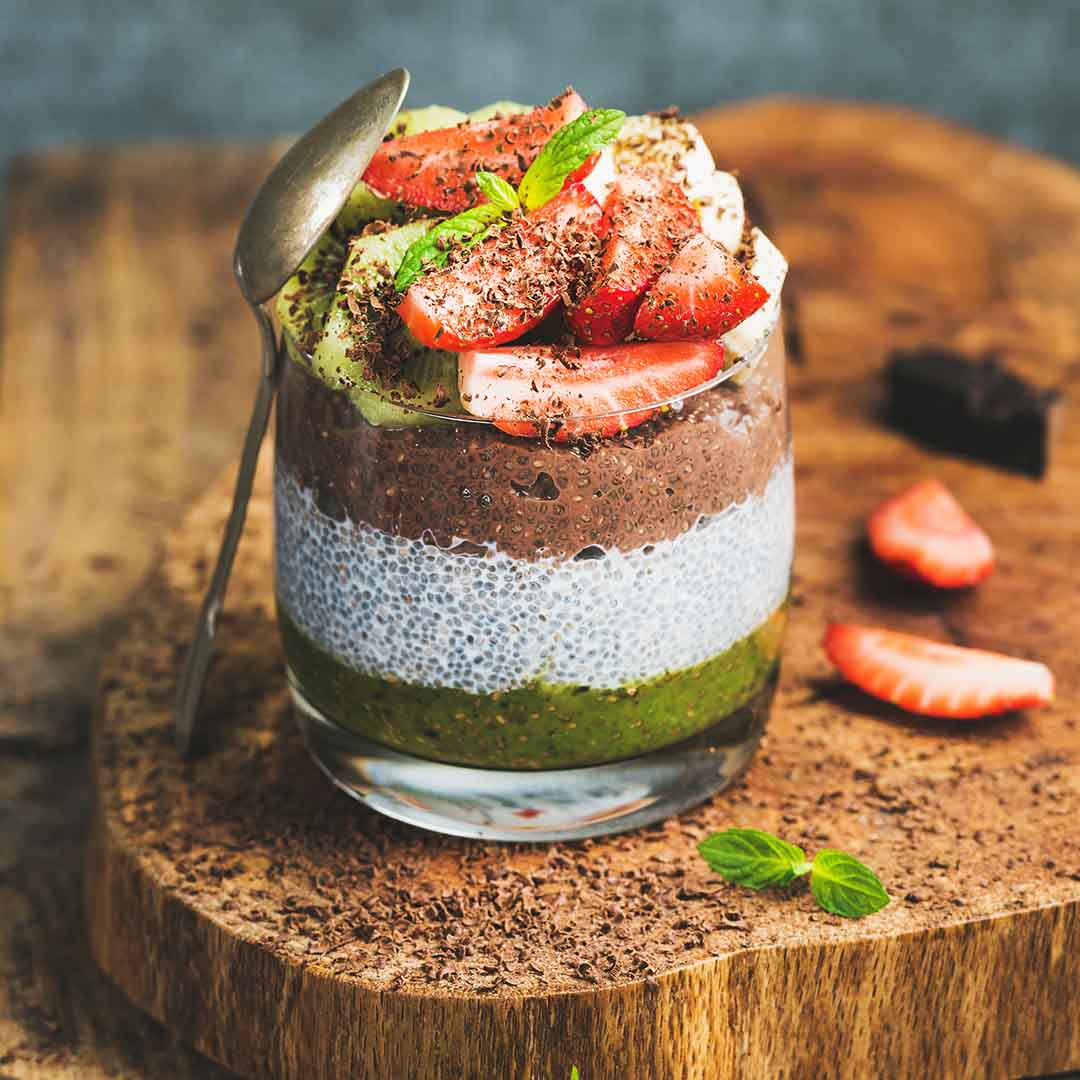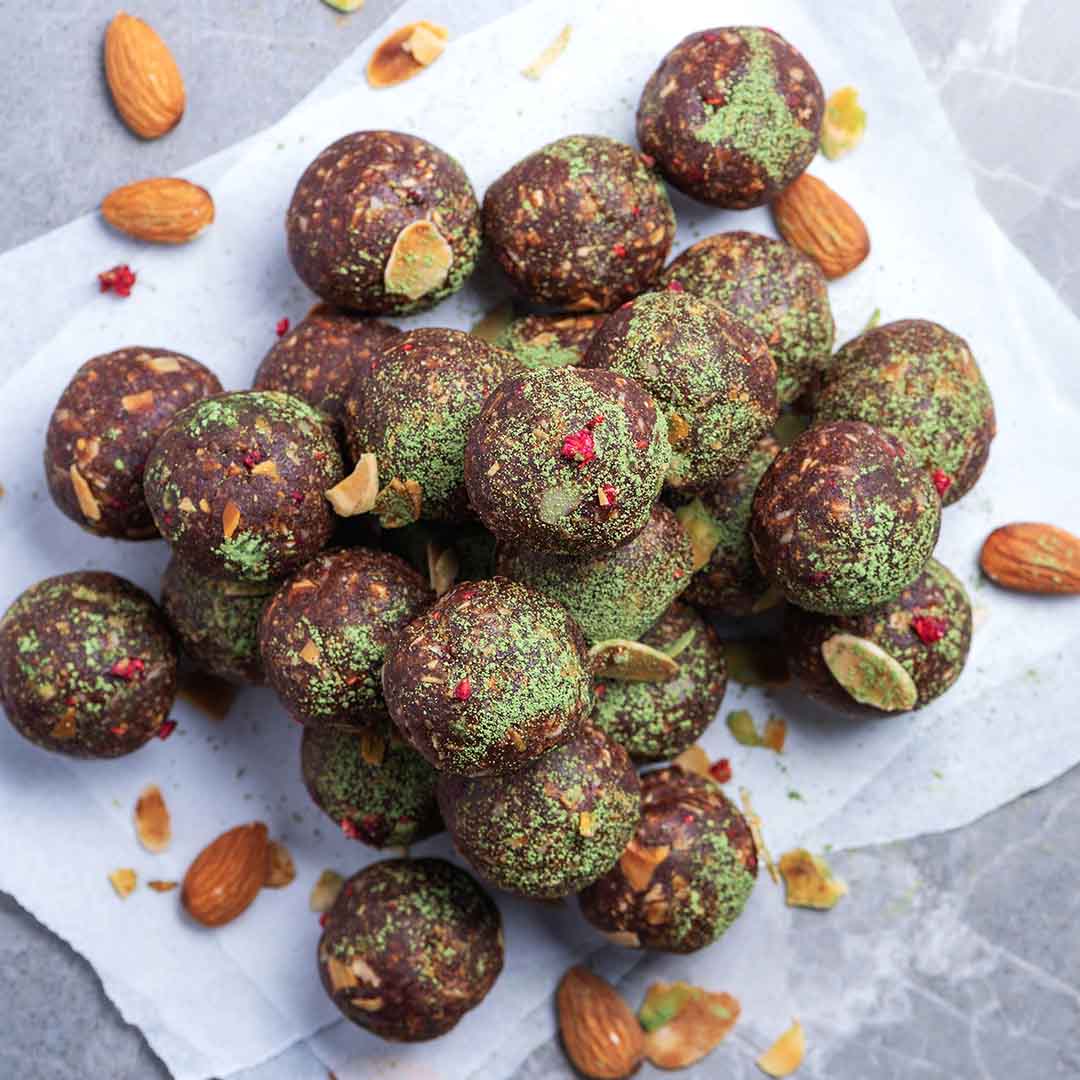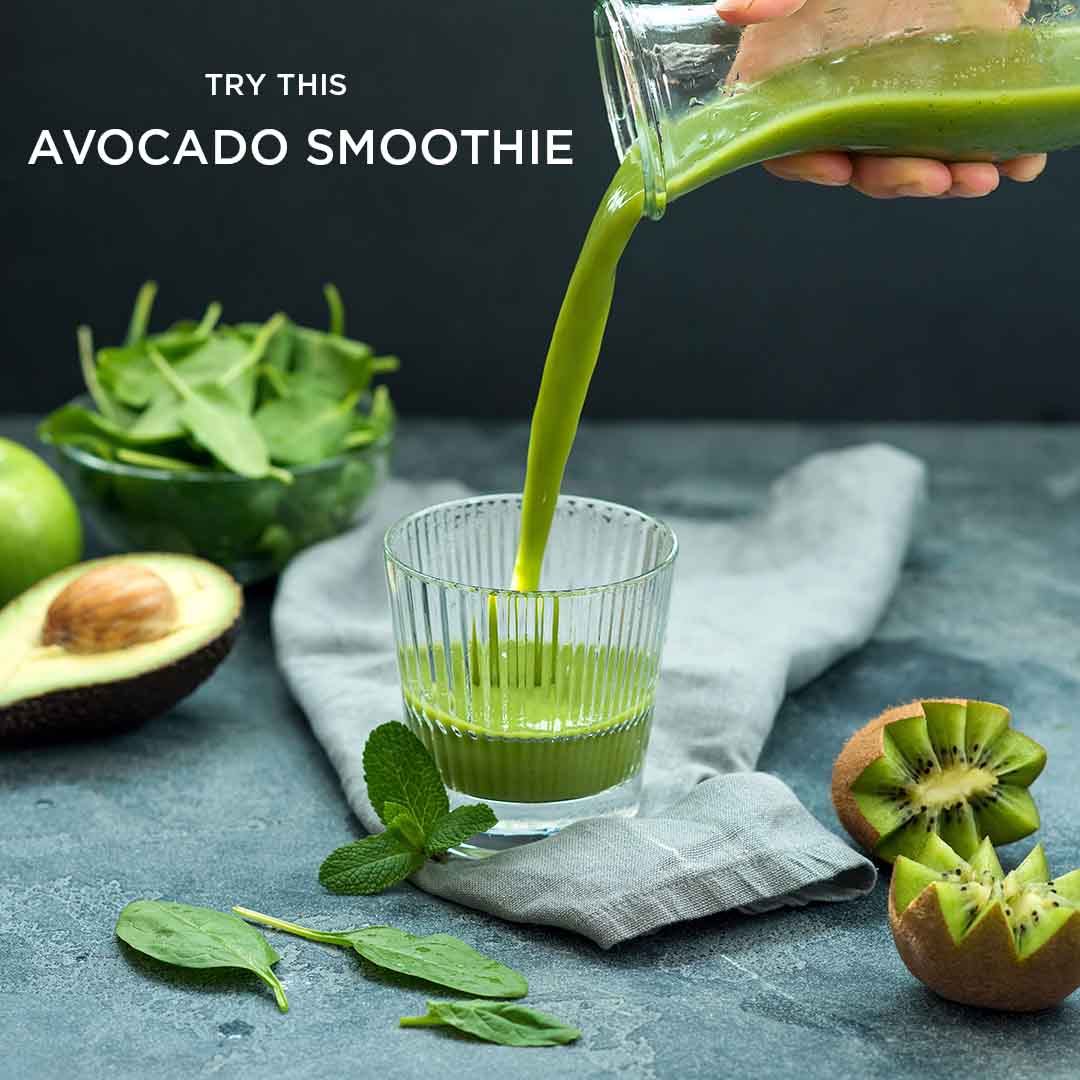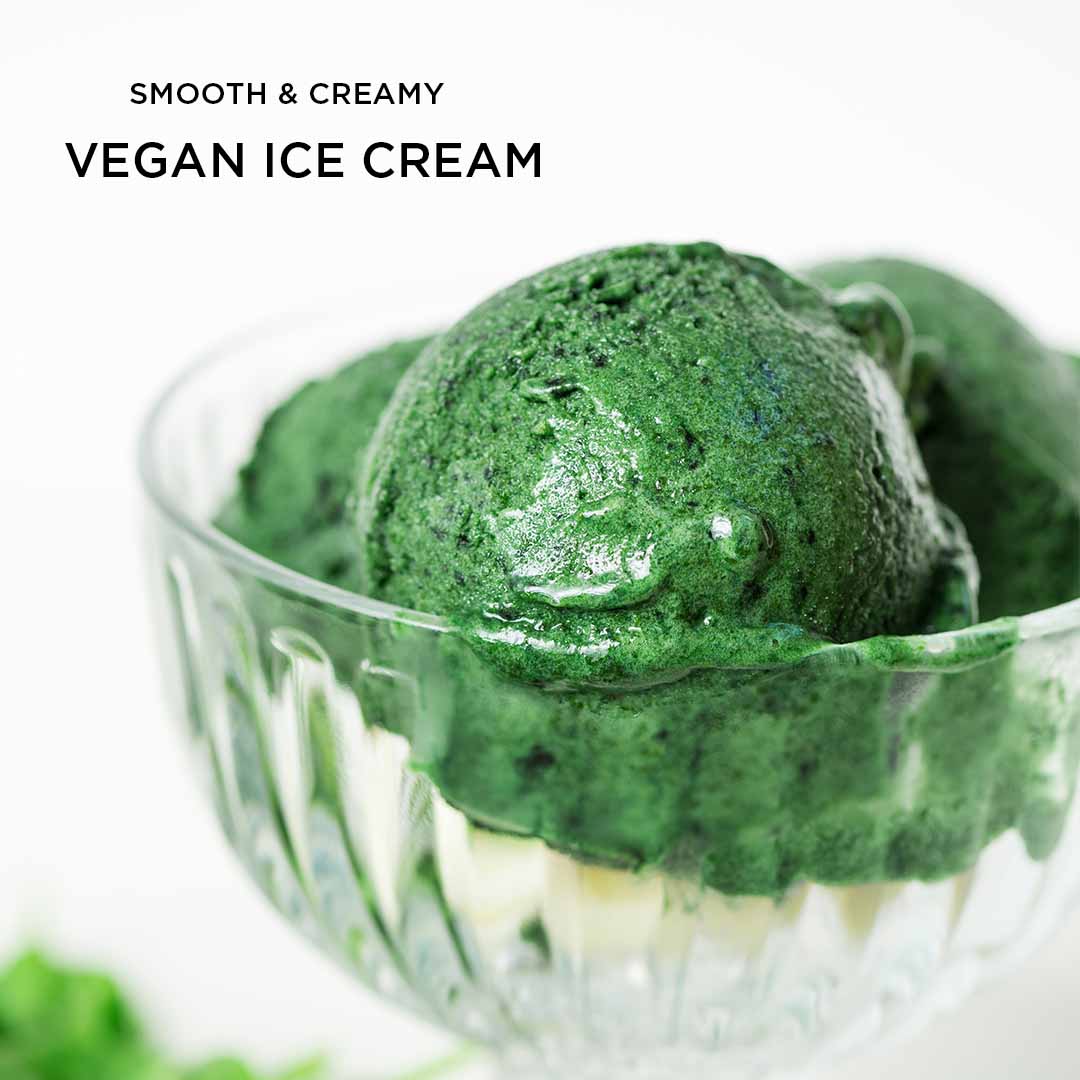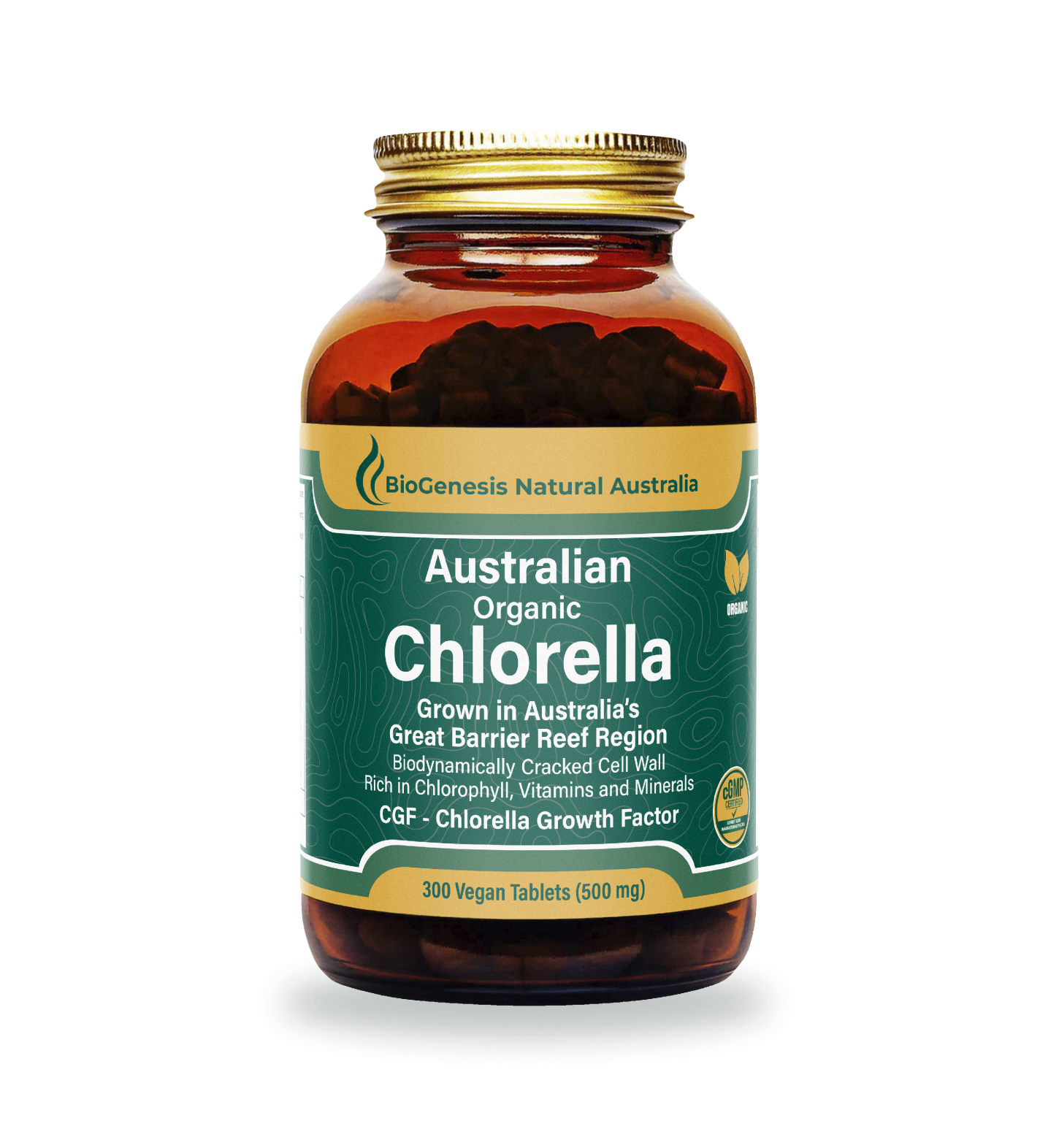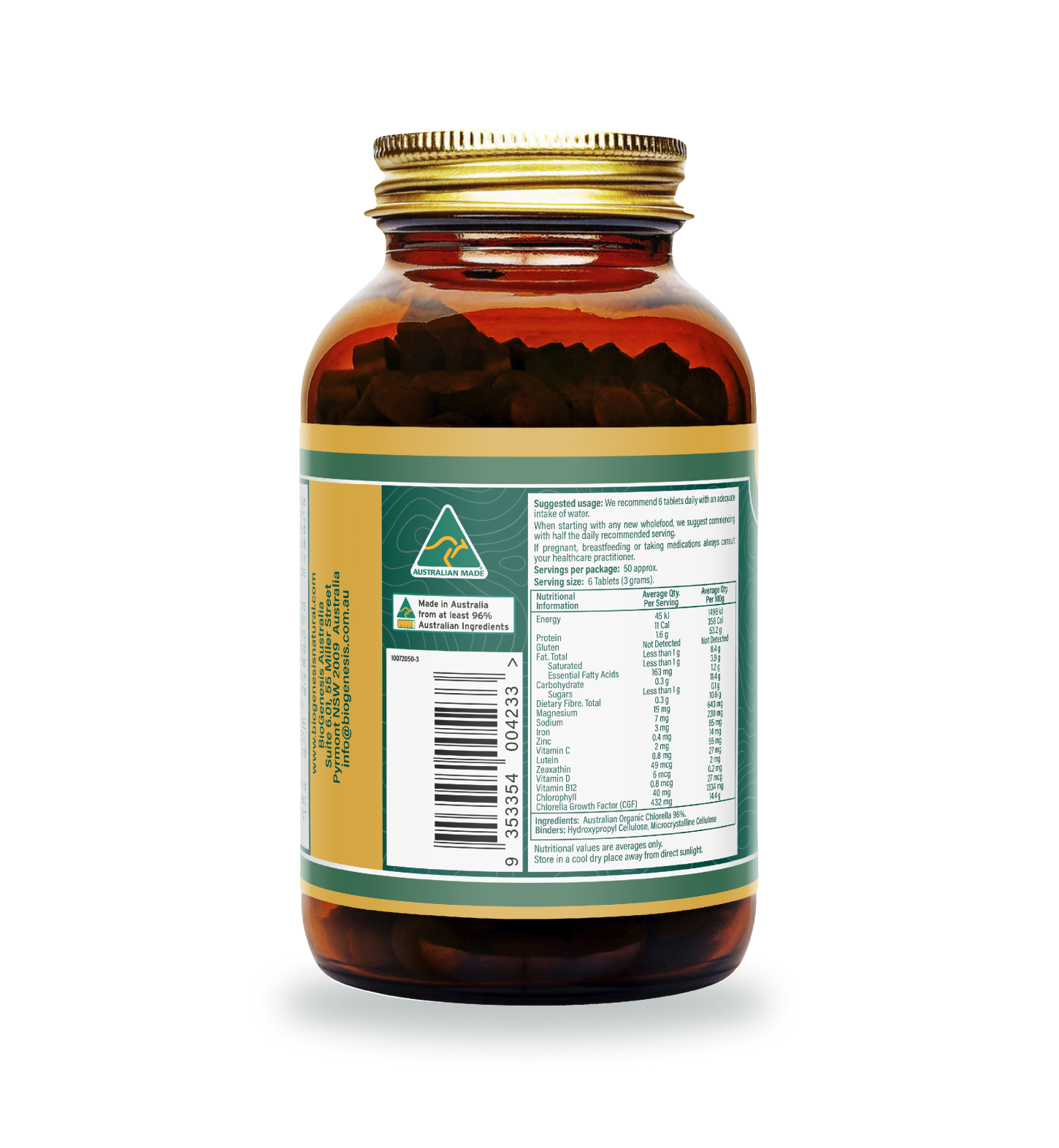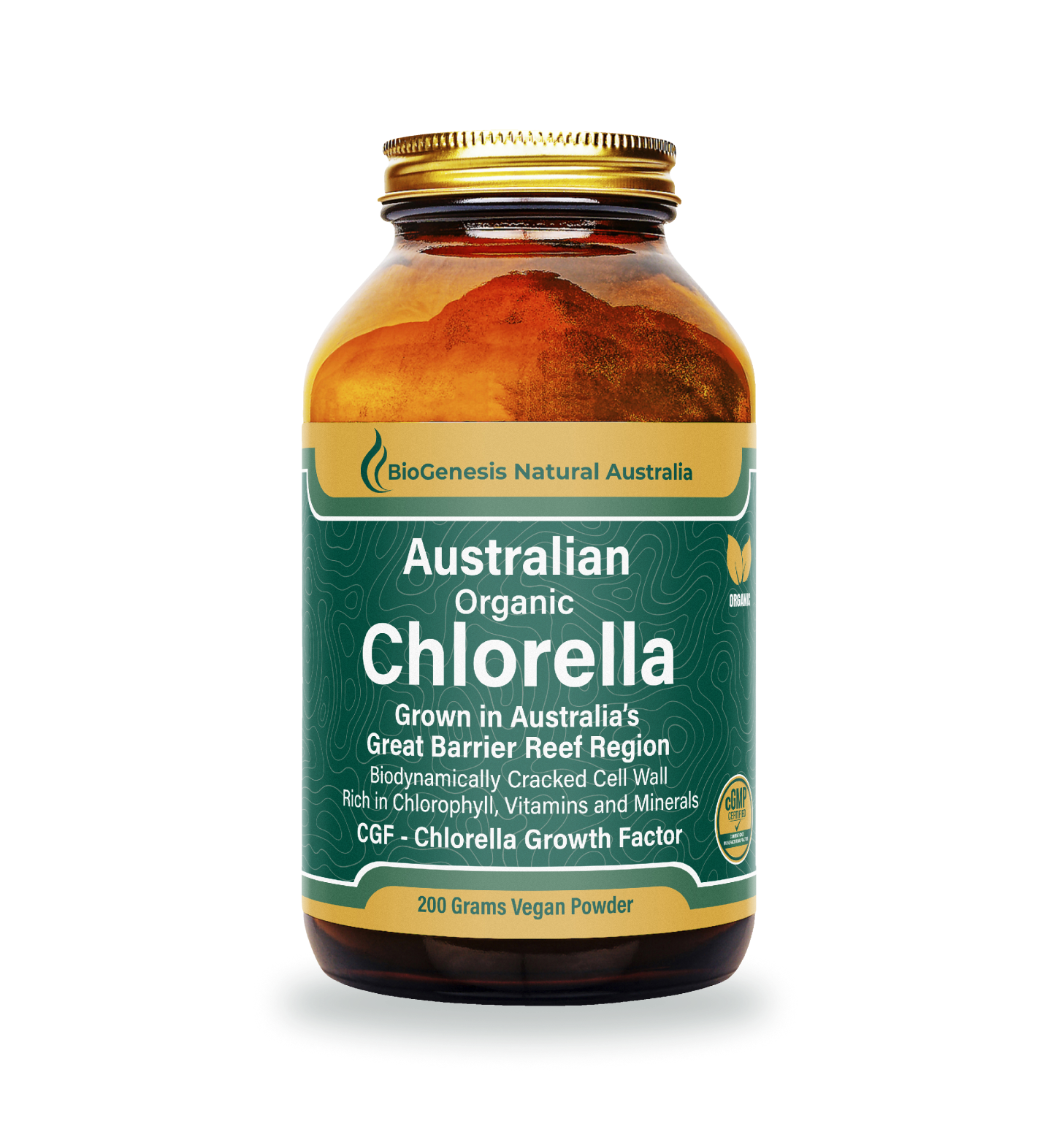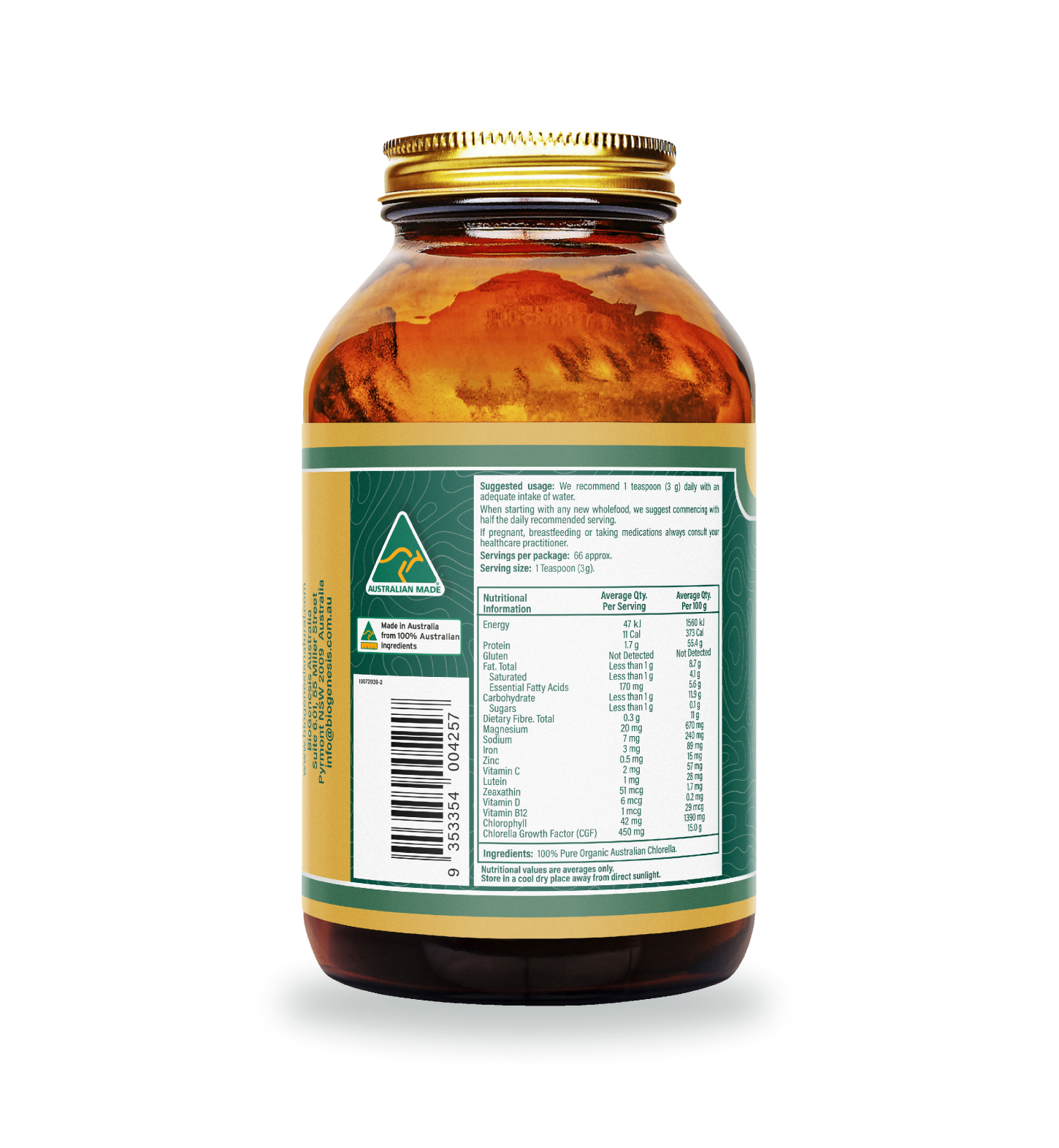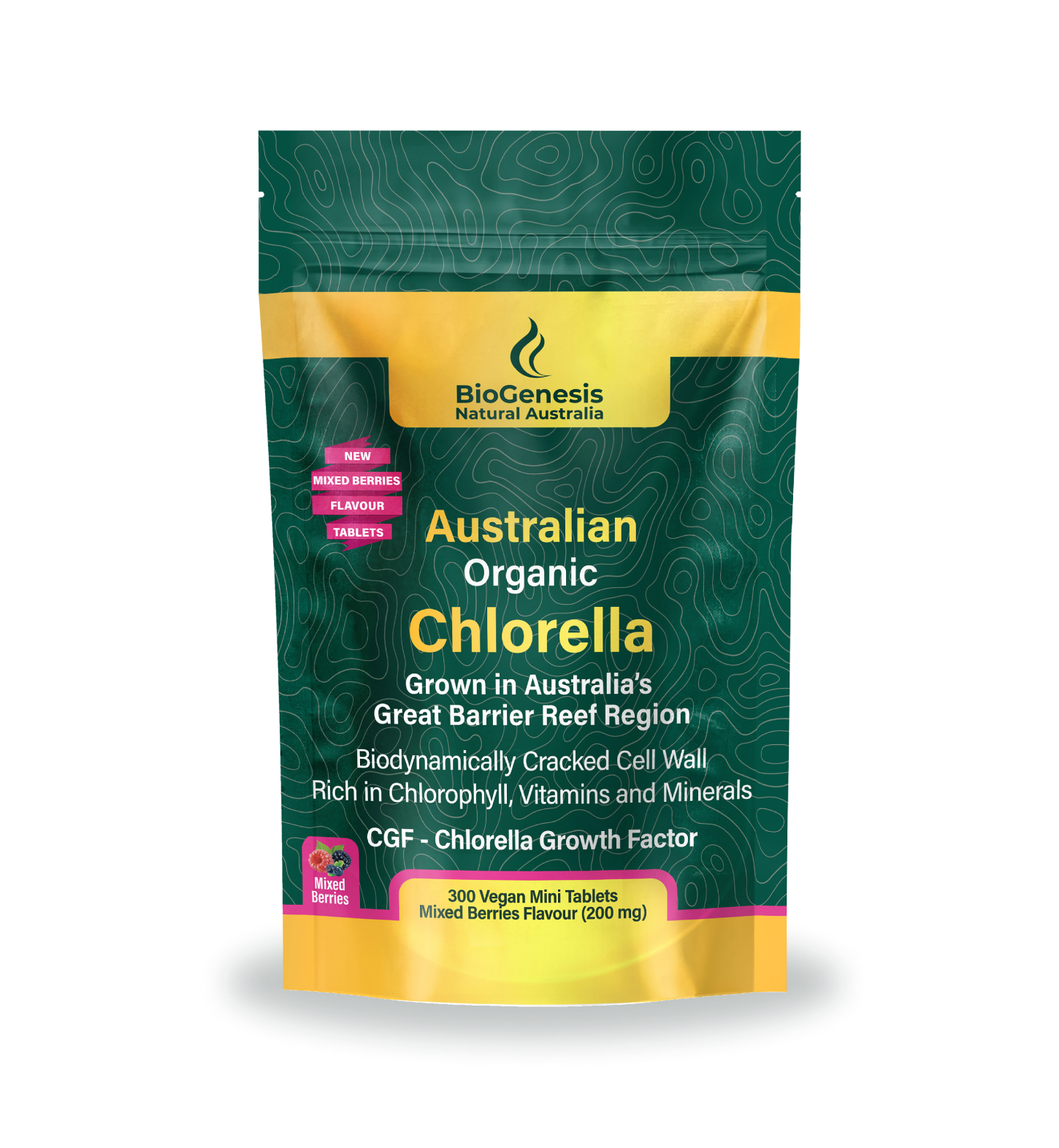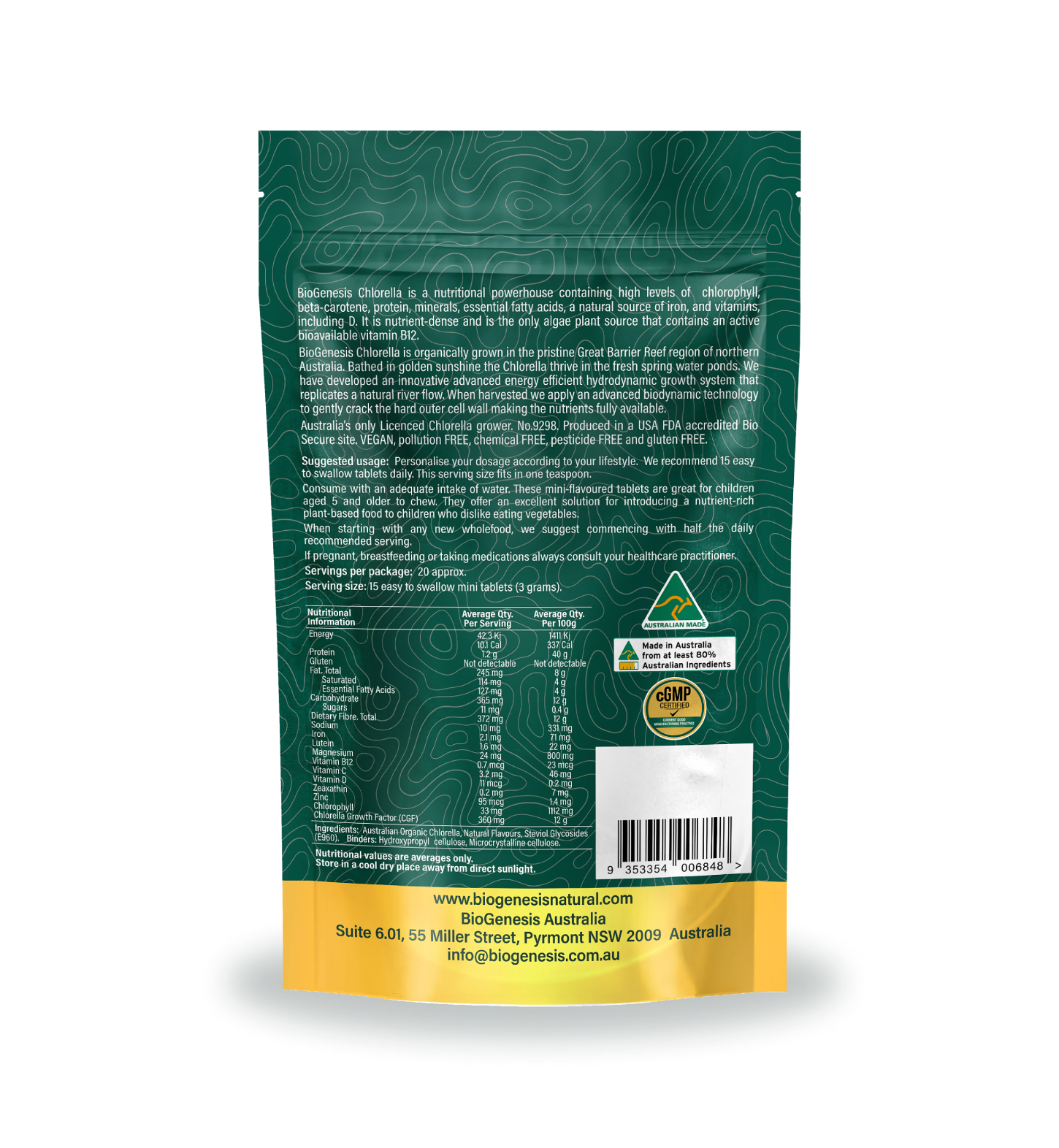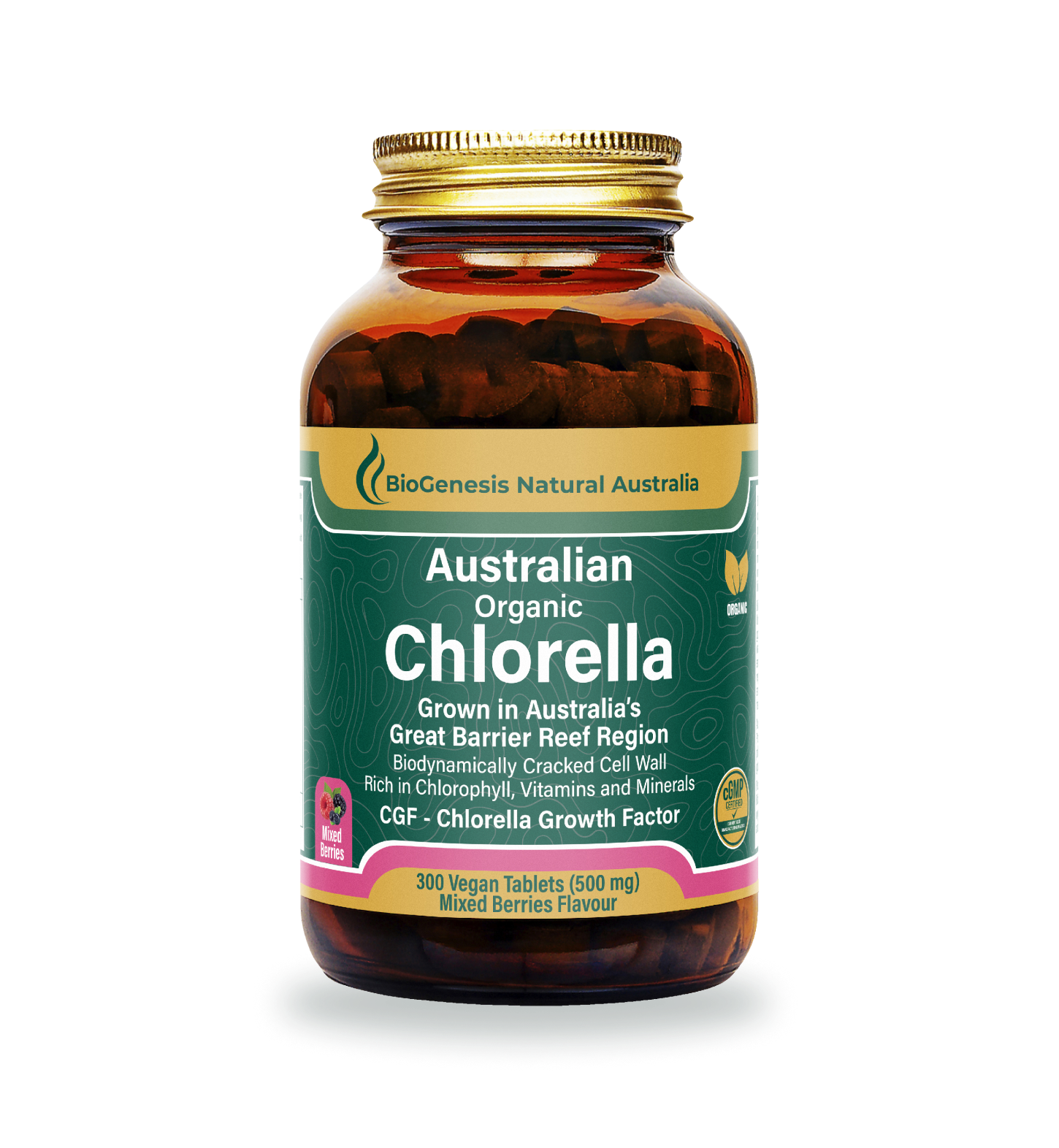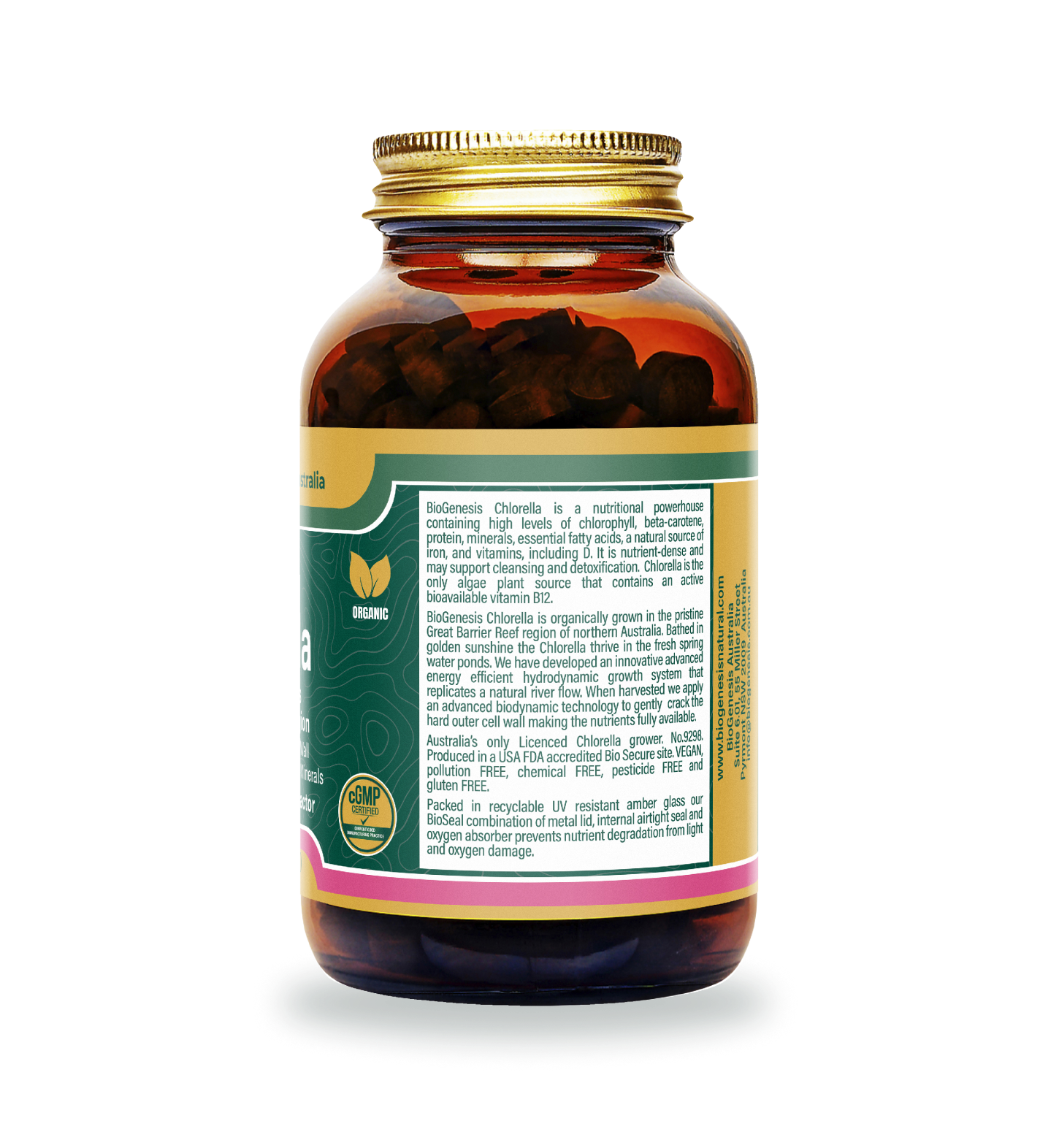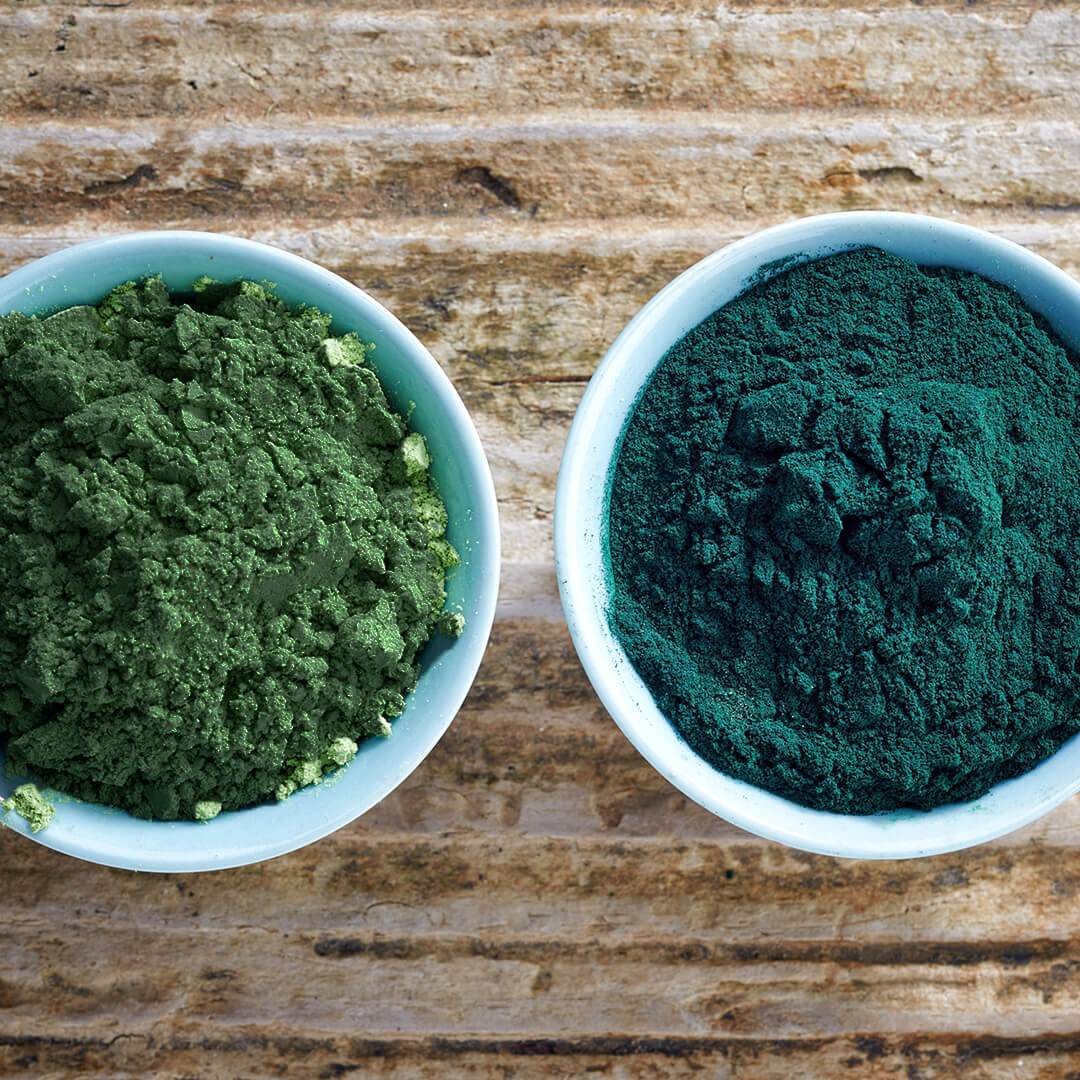
Spirulina Vs. Chlorella, Which Is Superior?
by Colin McGregor
To stay healthy, active, and away from chronic and other diseases, supplements are gaining massive popularity among people. Algae in the forms of chlorella and spirulina are nutrient-dense and generally considered safe to consume for this purpose. They are linked to several positive health effects, including reducing risk factors for cardiovascular disease and improving the ability to control blood sugar levels. They are also rich in antioxidant, anti-inflammatory, and immune-supporting properties. Both these algae are considered a superfood because they provide you with protein, fiber, vitamin A, C, K, and B complex, and amino acids.
Although chlorella and spirulina offer many similar health benefits, chlorella is superior to spirulina in a number of ways. Keep on reading this article to know the facts about how chlorella outperforms spirulina in different ways.
What Is Chlorella?
Chlorella is an algae that consists of a single cell and lives in freshwater. It is primarily grown in Japan, Taiwan and Australia. Chlorella is naturally abundant in a variety of nutrients, including proteins, vitamins, minerals, and fiber. According to different research studies, some of its benefits include increasing the body's antibodies, aiding in weight loss, and warding off other issues. Many other types of essential nutrients can also be found in chlorella. These nutrients include proteins, omega-3 fatty acids, B complex vitamins, minerals, and antioxidants (Otsuki, 2011) Chlorella Growth Factor (CGF) is a unique feature of chlorella which occurs in the nucleus of the cell. It is produced during photosynthesis and makes chlorella cells grow rapidly. Extensive use of chlorella has been seen in research on photosynthesis and in experiments involving mass cultivation. In order to provide food for the ever-increasing number of people across the world, there have been suggestions made to use chlorella as a source of protein and other nutrients.
What Is Spirulina?
Spirulina is a blue-green alga that develops in both fresh and salt water. It is high in protein, copper, and B vitamins. The primary bioactive component of spirulina is called phycocyanin. It is rich in antioxidants and also works to reduce inflammation in the body. Studies in test tubes and on animals suggest that spirulina may support the immune system and may provide protection against allergic reactions.
How Chlorella Is Superior to Spirulina?
Although spirulina and chlorella are both considered superfoods, many dieticians and food experts recommend them as the best choice for multivitamins to maintain good health. But there are some facts about chlorella that make it superior to spirulina, and these facts are listed below.
1. Chlorella Contains More Nutrition Than Spirulina
Chlorella and spirulina are rapidly gaining popularity in the world of dietary supplements and multivitamins. Chlorella is superior to spirulina because, even though both types of algae are high in a variety of nutrients, chlorella has a greater quantity of essential elements needed for your body. The quantity of phosphorus and riboflavin in chlorella is more than in spirulina. Additionally, chlorella also has more magnesium, iron, and zinc than spirulina. It has 22%, 202%, and 133% of the daily value for magnesium, iron, and zinc, respectively, while spirulina only has 14%, 44%, and 4% (Mason, 2001).
2. Chlorella Has a Higher Concentration of Omega-3 Fatty Acids.
Although both chlorella and spirulina contain comparable quantities of fat, the types of fat that they include are very different. Polyunsaturated fatty acids, such as omega 3, are essential to the body because they are necessary for healthy cell development and brain function. They are called essential because your body can't make them on its own. So, you must get them from the food you eat. Omega-3 fatty acids have been related to a variety of health benefits, such as a reduction in inflammation, and improved bone health. (Saini, 2018). A study about the fatty acid content of these algae discovered that chlorella has more omega-3 fatty acids as compared to spirulina (Kent, 2015).
3. Chlorella Has Active B12 But Spirulina Has Inactive B12
Vitamin B12 is vital for many different aspects of your health, including forming red blood cells, maintaining healthy bones, maintaining adequate energy levels, and maintaining a positive mood (Clarke, 2015).
Chlorella is among the few plant sources that contain active B12, a form that is easily absorbed by the body. This makes chlorella superior to spirulina because spirulina does not contain active B12 and has inactive B12. The body finds it harder to absorb inactive B12, which may interfere with its ability to absorb active B12 from other foods (Edelmann, 2019), (Reboleira, 2019).
A study showed that taking 9 grams of chlorella every day for 60 days was enough to lower homocysteine levels in the blood, which is a sign of a lack of B12 (Merchant, 2015).
4. Chlorella Is Abundant in Vitamin A ( Beta Carotene), But Spirulina Is Not
Vitamin A is essential for good health. It promotes the growth of cells, as well as immune function, fetal development, and vision. One of the most well-known applications of vitamin A is the role it plays in maintaining healthy eyes and vision. Additionally, it assists in the protection and maintenance of the cornea, which is the layer that is located at the very surface of the eye, in addition to the conjunctiva, which is a delicate membrane that covers both the interior side of the eyelids and the surface of the eye. The conjunctiva also protects the cornea from foreign particles and debris (Feroze, 2017).
Chlorella, unlike spirulina, contains a significant amount of Bea-carotin, making it an excellent choice for supporting eye health, warding off vision problems, and giving you 287% of your daily vitamin A requirement. In comparison, spirulina only provides 3% (Andrade, 2018).
5. Chlorella Has Chlorella Growth Factor, But Spirulina Lacks the Growth Factor
Only chlorella contains the growth factor known as the chlorella growth factor (CGF). This incredible component cannot be found in any other type of microalgae like spirulina. Each chlorella cell has its own Chlorella Growth Factor, which is located in the cell's nucleus. Researchers have found that intense photosynthesis makes CGF, which is what helps chlorella proliferate. About every 20 hours, each cell divides into two new cells, and the CGF makes this happen quickly. DNA and RNA, two types of nucleic acids, are the building blocks of CGF. (An, 2016). This is the reason why chlorella is superior to spirulina in terms of including it in your diet.
6. Spirulina May Be Contaminated with Toxins
Spirulina that is collected from the wild has a high chance of being contaminated. Algae that grow in water polluted with heavy metals, bacteria, or harmful particles called microcystins may contain toxins. Blue-green algae actually produce microcystins as a form of self-defense against various types of predators. When taken in large quantities, they have a toxic effect on the liver (Schmidt, 2014).
One study found that taking 6 grams of Chlorella daily while pregnant can reduce the number of dioxins in breast milk by about 30%. Also, there was a significant increase in the amount of immunoglobin A (IgA) in breast milk. So, women who are pregnant and then start breastfeeding can get two benefits from chlorella. It will reduce the number of dioxins their children are exposed to and also help protect them from getting sick (Nakano, 2005).
According to the findings of another study, chlorella can cut down on the amount of dioxins that are detected in food (Nakano, 2007).
7. Chlorella Provides More Energy Than Spirulina
At the level of the cell, RNA and DNA are the molecules that are accountable for the production of proteins, enzymes, and energy. Chlorella growth factor (CGF) has the ability to make people feel more energized because it contains nucleic acids. It is thought that this gives you more energy because getting nucleic acid from food outside your body and absorbing it reduces the work your body has to do to make RNA and DNA. When you use less of your body's energy, you can use that energy in other parts of your day. (Suter, 2011).
8. Chlorella Having More Chlorophyll Is Best for Weight Loss Than Spirulina
Consuming a high amount of chlorophyll is very helpful in losing weight. It can suppress your appetite and the amount of food you consume. This effect, in conjunction with chlorophyll's ability to enhance feelings of fullness, contributes to weight gain prevention.
A study conducted in 2014 on a small group of obese women found that those who took a supplement made from green plant membranes and containing chlorophyll once per day for a time period of three months experienced more significant weight loss than those who did not take the supplement (Montelius, 2014).
When compared to spirulina, chlorella is a richer source of chlorophyll and promotes more weight loss than spirulina. The amount of chlorophyll in 3 grams of chlorella is 63 mg, while the amount in 3 grams of spirulina is only 33 mg
The Bottom Line
Chlorella and spirulina are both considered superfoods with fantastic health benefits and a variety of nutrients. They have the ability to fulfill the nutritional requirement of your body and are a rich source of many antioxidants, carotenoids, proteins, vitamins, and minerals. But chlorella is considered superior to spirulina in many different ways. Chlorella is higher in nutrition than spirulina and is the favorite choice of nutritionists and dietitians. It has more amount omega-3 fatty acids and vitamin A ( Beta Carotene) than spirulina. Chlorella provides you with the active form of vitamin B12, whereas spirulina gives you an inactive form of B 12. Being richer in chlorophyll content than spirulina, chlorella is considered a healthy choice for weight loss than spirulina.
References
Otsuki, T., Shimizu, K., Iemitsu, M., & Kono, I. (2011). Salivary secretory immunoglobulin A secretion increases after 4-weeks ingestion of chlorella-derived multicomponent supplement in humans: a randomized cross over study. Nutrition journal, 10, 91. https://www.ncbi.nlm.nih.gov/pmc/articles/PMC3182968/
An, B. K., Kim, K. E., Jeon, J. Y., & Lee, K. W. (2016). Effect of dried Chlorella vulgaris and Chlorella growth factor on growth performance, meat qualities and humoral immune responses in broiler chickens. Springerplus, 5(1), 1-7. https://link.springer.com/article/10.1186/s40064-016-2373-4
Wu, Q., Liu, L., Miron, A., Klímová, B., Wan, D., & Kuča, K. (2016). The antioxidant, immunomodulatory, and anti-inflammatory activities of Spirulina: an overview. Archives of toxicology, 90(8), 1817–1840. https://pubmed.ncbi.nlm.nih.gov/27259333/
Mason, R. (2001). Chlorella and Spirulina: Green supplements for balancing the body. Alternative & Complementary Therapies, 7(3), 161-165. https://www.liebertpub.com/doi/pdf/10.1089/107628001300303691
Saini, R. K., & Keum, Y. S. (2018). Omega-3 and omega-6 polyunsaturated fatty acids: Dietary sources, metabolism, and significance - A review. Life sciences, 203, 255–267. https://pubmed.ncbi.nlm.nih.gov/29715470/
Kent, M., Welladsen, H. M., Mangott, A., & Li, Y. (2015). Nutritional evaluation of Australian microalgae as potential human health supplements. PloS one, 10(2), e0118985. https://www.ncbi.nlm.nih.gov/pmc/articles/PMC4344213/
An, B. K., Kim, K. E., Jeon, J. Y., & Lee, K. W. (2016). Effect of dried Chlorella vulgaris and Chlorella growth factor on growth performance, meat qualities and humoral immune responses in broiler chickens. SpringerPlus, 5(1), 718. https://pubmed.ncbi.nlm.nih.gov/27375987/
Schmidt, J. R., Wilhelm, S. W., & Boyer, G. L. (2014). The fate of microcystins in the environment and challenges for monitoring. Toxins, 6(12), 3354–3387. https://pubmed.ncbi.nlm.nih.gov/25514094/
Nakano, S., Noguchi, T., Takekoshi, H., Suzuki, G., & Nakano, M. (2005). Maternal-fetal distribution and transfer of dioxins in pregnant women in Japan, and attempts to reduce maternal transfer with Chlorella (Chlorella pyrenoidosa) supplements. Chemosphere, 61(9), 1244-1255. https://www.sciencedirect.com/science/article/pii/S0045653505004959
Nakano, S., Takekoshi, H., & Nakano, M. (2007). Chlorella (Chlorella pyrenoidosa) supplementation decreases dioxin and increases immunoglobulin a concentrations in breast milk. Journal of medicinal food, 10(1), 134–142. https://pubmed.ncbi.nlm.nih.gov/17472477/
Panahi, Y., Darvishi, B., Jowzi, N., Beiraghdar, F., & Sahebkar, A. (2016). Chlorella vulgaris: a multifunctional dietary supplement with diverse medicinal properties. Current pharmaceutical design, 22(2), 164-173.
Suter, P. M. (2011). Vitamin A, nutrition, and health values of algae: Spirulina, Chlorella, and Dunaliella. Journal of Pharmacy and Nutrition Sciences, 1(2), 111-118. https://setpublisher.com/pms/index.php/jpans/article/view/2189
Montelius, C., Erlandsson, D., Vitija, E., Stenblom, E. L., Egecioglu, E., & Erlanson-Albertsson, C. (2014). Body weight loss, reduced urge for palatable food and increased release of GLP-1 through daily supplementation with green-plant membranes for three months in overweight women. Appetite, 81, 295-304. https://www.sciencedirect.com/science/article/pii/S0195666314003493
Clarke, M., Ward, M., Dickey, W., Hoey, L., Molloy, A. M., Waldron, L., Varghese, A., McCann, A., Blayney, J. K., & McNulty, H. (2015). B-vitamin status in relation to bone mineral density in treated celiac disease patients. Scandinavian journal of gastroenterology, 50(8), 975–984 https://pubmed.ncbi.nlm.nih.gov/25861707/
Edelmann, M., Aalto, S., Chamlagain, B., Kariluoto, S., & Piironen, V. (2019). Riboflavin, niacin, folate and vitamin B12 in commercial microalgae powders. Journal of Food Composition and Analysis, 82, 103226. https://www.sciencedirect.com/science/article/pii/S0889157519300730
Reboleira, J., Freitas, R., Pinteus, S., Silva, J., Alves, C., Pedrosa, R., & Bernardino, S. (2019). Spirulina. In Nonvitamin and nonmineral nutritional supplements (pp. 409-413). Academic Press. https://www.sciencedirect.com/science/article/pii/B9780128124918000552
Merchant, R. E., Phillips, T. W., & Udani, J. (2015). Nutritional Supplementation with Chlorella pyrenoidosa Lowers Serum Methylmalonic Acid in Vegans and Vegetarians with a Suspected Vitamin B₁₂ Deficiency. Journal of medicinal food, 18(12), 1357–1362. https://pubmed.ncbi.nlm.nih.gov/26485478/
Majdoub, H., Ben Mansour, M., Chaubet, F., Roudesli, M. S., & Maaroufi, R. M. (2009). Anticoagulant activity of a sulfated polysaccharide from the green alga Arthrospira platensis. Biochimica et biophysica acta, 1790(10), 1377–1381. https://pubmed.ncbi.nlm.nih.gov/19632306/
Tan, C. S. S., & Lee, S. W. H. (2021). Warfarin and food, herbal or dietary supplement interactions: A systematic review. British journal of clinical pharmacology, 87(2), 352-374. https://bpspubs.onlinelibrary.wiley.com/doi/abs/10.1111/bcp.14404
Feroze, K. B., & Kaufman, E. J. (2017). Xerophthalmia. https://europepmc.org/article/nbk/nbk431094
Andrade, L. M., Andrade, C. J., Dias, M., Nascimento, C., & Mendes, M. A. (2018). Chlorella and spirulina microalgae as sources of functional foods. Nutraceuticals, and Food Supplements, 6(1), 45-58. https://www.researchgate.net/profile/Lidiane-Andrade/publication/322888591_Chlorella_and_Spirulina_Microalgae_as_Sources_of_Functional_Foods_Nutraceuticals_and_Food_Supplements_an_Overview/links/5a745245458515512078e1ec/Chlorella-and-Spirulina-Microalgae-as-Sources-of-Functional-Foods-Nutraceuticals-and-Food-Supplements-an-Overview.pdf



